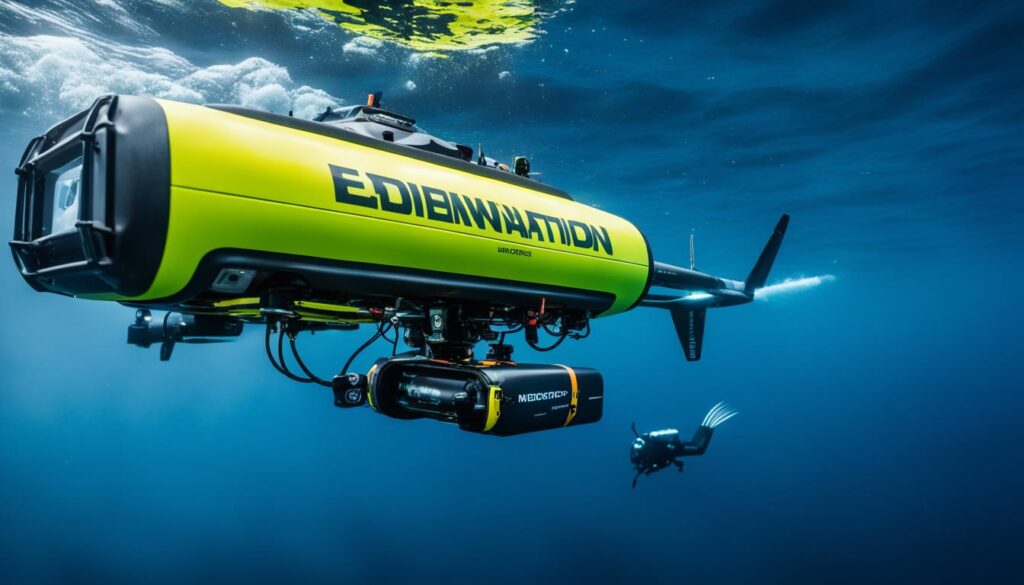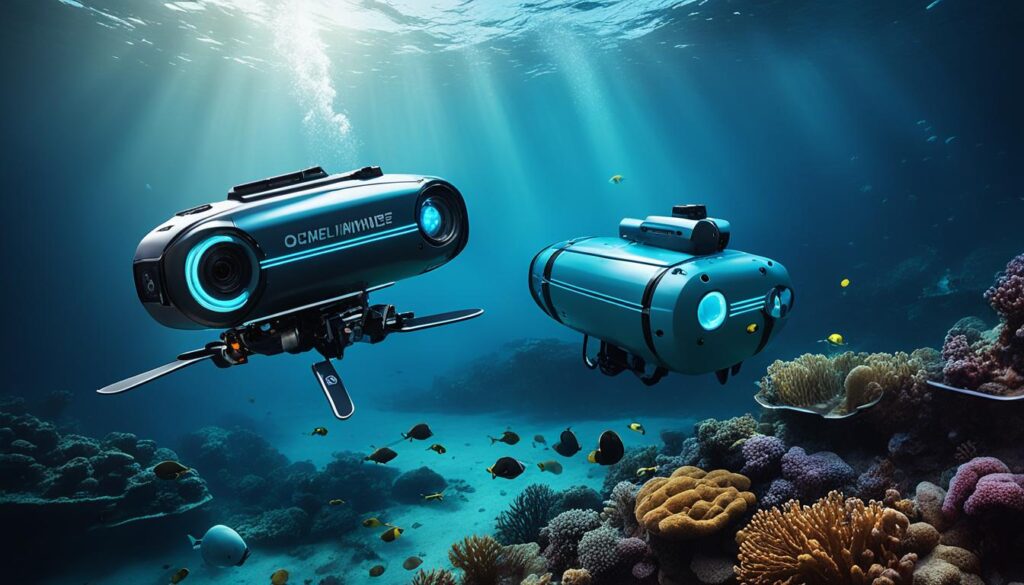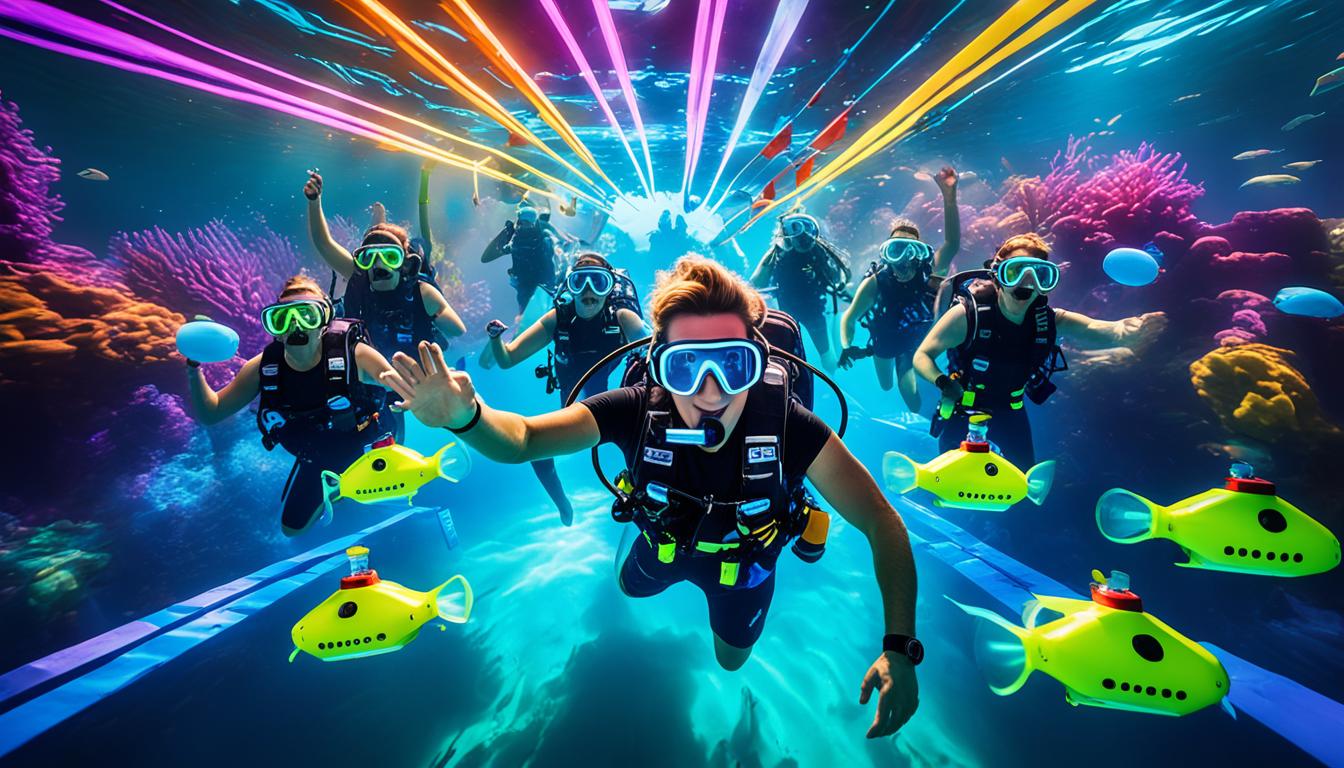The advent of underwater drone technology has revolutionized search and rescue operations, bringing an array of benefits to missions that demand swift and efficient life-saving actions. The role of underwater drones, with their precision and capacity to withstand hostile underwater environments, has proven to be a game-changer in how search and rescue teams approach and execute their critical work. These remotely operated vehicles serve as powerful life-saving technology, extending the capabilities of human divers and allowing for quicker responses in times of crisis.
Equipped with advanced sensors and camera systems, underwater drones provide real-time data and visuals that are vital for rapid decision-making during search operations. The use of these innovative tools has not only improved the success rates in locating and assisting victims but has also significantly reduced the risks associated with human divers conducting such operations. The benefits of underwater drones go beyond safety; they also ensure that the precious time of search and rescue teams is utilized more effectively, leading to more lives saved.

Key Takeaways
- Underwater drones play a crucial role in enhancing the efficiency and effectiveness of search and rescue operations.
- Remote-controlled underwater vehicles are instrumental as life-saving technology in critical situations.
- The benefits of underwater drones include improved safety for human divers and quicker mission execution.
- These drones are equipped with state-of-the-art sensors and cameras that provide invaluable data during rescues.
- Underwater drone technology is transforming the way search and rescue teams operate in marine environments.
Introducing Underwater Drone Technology in Rescue Missions
As the landscape of search and rescue operations evolves, the introduction of underwater drones marks a significant milestone in how rescue missions are conducted. These advanced pieces of machinery enhance human capability and bring unparalleled efficiency to underwater search and rescue (SAR) efforts. With the incorporation of drone technology, the domain of SAR is witnessing a notable shift towards more reliable and less risky operations.
What are Underwater Drones?
Underwater drones, also known as remotely operated vehicles (ROVs), are submersible, remotely controlled robots designed for aquatic environments. These sophisticated devices are equipped with cameras, sensors, and sometimes manipulator arms to perform tasks in underwater settings that would be difficult or dangerous for human divers.
Technological Advancements in Drone Technology
With relentless progression in technology, today’s underwater drones boast capabilities once deemed futuristic. Recent enhancements include improved battery life, advanced navigation systems, and high-resolution imaging. These improvements allow underwater drones to stay submerged longer, transmit data in real-time, and provide clear visuals in the murky depths, making them prime assets for underwater search and rescue missions.
Benefits of Deploying Drones for Underwater Search Efforts
Integrating drones into SAR operations delivers a range of benefits. Drones strengthen search capabilities by reaching areas humans cannot, reducing the time taken to locate objects or people. Furthermore, their use mitigates risks, safeguarding human life by preventing exposure to hazardous underwater conditions.
- Improved Safety: Drones take the place of divers in treacherous waters, minimizing human risk.
- Efficiency: Expedited search due to drones’ speed and maneuverability.
- High-Quality Data: Enhanced imaging and mapping technologies provide invaluable insights during SAR missions.
| Feature | Benefit in SAR |
|---|---|
| Real-time video feed | Immediate assessment and response in critical situations. |
| Extended operational range | Broader search area coverage without compromising on detail. |
| Environmental adaptability | Capability to operate in diverse aquatic conditions, from shallow ponds to deep oceans. |
The integration of underwater drones in SAR operations signifies a landmark advancement in rescue technology. By improving search and rescue with drones, agencies are not only enhancing the effectiveness of their missions but also protecting the lives of those who brave the depths to save others.
Enhancing Search Operations with Underwater Drones
In the realm of underwater search and rescue, the integration of remote-controlled drones has been nothing short of revolutionary. By harnessing underwater drone capabilities, rescue operations with drones are achieving higher levels of efficiency and safety than ever before, providing first responders with reliable tools to execute complex missions.
Capabilities of Underwater Drones in Search Missions
Underwater drones are tirelessly revolutionizing search operations with their ability to navigate treacherous environments inaccessible to human divers. Equipped with advanced sonar technology, high-definition cameras, and powerful lighting, these drones offer unparalleled visibility and reconnaissance capabilities. Modern drones can also withstand extreme depths and currents, making them invaluable assets in underwater search operations.
Operational Efficiencies and Time Management
Time is a critical factor in rescue operations, and underwater drones excel in rapid deployment and operation. Remote-controlled drones streamline the search process by rapidly scanning vast areas and feeding real-time data back to operators. This not only accelerates the search but also allows for the allocation of human resources where they are most needed, thereby improving overall operational efficiencies.
The Impact on Safety for Human Divers
The use of underwater drones has significantly reduced the risks faced by human divers. By conducting preliminary assessments and identifying potential hazards, drones ensure that human divers are only deployed when necessary and into less risky environments. This paradigm shift in the approach to underwater search and rescue has been monumental in preserving the wellbeing of rescue teams.
| Underwater Drone Feature | Impact on Search Operations | Impact on Diver Safety |
|---|---|---|
| Advanced Sonar Imaging | Allows for detailed mapping of underwater terrain. | Reduces the need for blind dives and diver exposure to unknown hazards. |
| Extended Operational Depth | Enables searches in areas too deep for human divers. | Eliminates the threat of extreme pressure on human divers. |
| High-Definition Cameras | Provides visual confirmation and identification of objects. | Minimizes divers’ exposure time in hazardous conditions. |
| Remote Operability | Improves the speed of area coverage and data collection. | Prevents unnecessary diver deployment in dangerous conditions. |
Real-World Applications: Successful Rescue Operations with Drones
The adoption of underwater drones in life-saving missions has been a game-changer in the realm of search and rescue operations. These innovative tools have spearheaded successful rescue missions in various aquatic environments, demonstrating the depth of their real-world applications. Most notably, they have become cornerstones of life-saving technology with drones, proving instrumental in saving lives while providing a benchmark for future rescue endeavors.
The utilization of underwater drones has shown substantial improvements in operation efficiency and success rates. From locating lost shipwreck treasures to finding missing persons, underwater drones have proved their worth as indispensable assets in rescue and recovery missions. Their high-resolution cameras, sonar capabilities, and navigation precision allow them to traverse murky waters, significantly aiding in the progress and positive outcomes of many operations.

| Mission | Location | Outcome | Drone Used |
|---|---|---|---|
| Shipwreck Search | Coast of Florida | Wreck Found | AquaBotix Hydroview |
| Flood Victim Search | Thailand Caves | Victims Rescued | BlueROV2 |
| Underwater Mine Detection | Persian Gulf | Mines Neutralized | Remus 100 |
| Marine Research | Great Barrier Reef | Data Collected | Seabotix LBV300-5 |
The table above presents a mere glimpse into the magnitude of successful deployments of this life-saving technology. Each of these missions benefits from the drones’ ability to provide real-time data and images, which is critical under time-sensitive circumstances. Especially in rescue operations, these tools have made it possible to find individuals against daunting odds, such as in the significant 2018 Thai cave rescue, where drones illuminated the path to a miraculous outcome.
One of the most compelling rescue missions to date involves underwater drones enabling divers to navigate and communicate in obscured waters, leading to the safe recovery of individuals in treacherous conditions.
- Enhanced Search and Retrieval: Drones facilitate broader search areas with less risk.
- Risk Mitigation: They reduce the need for human divers in initial hazardous explorations.
- Deep-Sea Exploration: Capable of reaching depths where human divers cannot safely go.
These drones are not only reshaping the approaches to search and rescue but are also continuously setting new standards for what is achievable in the realm of underwater exploration and disaster response.
Looking Ahead: The Future of Underwater Drones in Life-Saving Missions
As we navigate the currents of technological advancement, the future of underwater drones promises unprecedented opportunities for enhancing life-saving missions. With a relentless tide of innovations, improved integration strategies, and evolving legalities, these advanced machines are set to revolutionize underwater exploration and rescue operations.
Innovations on the Horizon of Underwater Exploration
New breakthroughs in technology are propelling underwater drones to uncharted depths. Innovations include enhanced sensory equipment for better data gathering, artificial intelligence for autonomous navigation, and battery systems that extend operational time frames significantly. These strides in technology are laying the groundwork for a new era of innovations in underwater exploration that will not only push the boundaries of what’s possible but will also ensure that drone missions are more effective than ever before in complex aquatic environments.

Training and Integration into Rescue Teams
The integration of underwater drones into rescue teams marks a pivotal shift in emergency response protocols. To seamlessly work alongside human operators, extensive training programs are being developed, focusing on operational mastery and scenario-based simulations. This ensures that the synergy between man and machine during missions is harmonious and efficient, truly integrating drones into rescue teams as indispensable partners in life-saving efforts.
Collaborations and Legal Frameworks Influencing Implementation
As underwater drones become more intertwined with rescue operations, collaborative efforts between manufacturers, regulatory bodies, and emergency services are on the rise. These partnerships are crucial for establishing robust legal frameworks for drone use, which aim to define operational parameters, ensure public safety, and address privacy concerns. By crafting well-informed legislation, the deployment of underwater drones in life-saving missions can proceed with clarity and confidence, benefitting all stakeholders involved.
Conclusion
As we encapsulate our exploration into the emergent field where technology meets tenacity, it’s evident that improving search and rescue with drones is not just a theoretical advantage but a practical elevation in critical response scenarios. The role of drones in search and rescue operations has transitioned from auxiliary to essential, providing an eye where human sight is limited and a presence where risk to human life is high. These pivotal roles underscore the significant strides made by remote-operated vehicles in safety, efficiency, and ingenuity.
The incorporation of underwater drones in search and rescue missions illuminates the path for innovative methodologies in lifesaving efforts. These adept machines have now become synonymous with expedited operations, braving depths and conditions that human divers may find challenging or hazardous. Their impact stretches beyond the technology itself, influencing protocols, training, and strategic planning within rescue teams.
Looking forward, the horizon teems with opportunities for advancement, silently promising enhancements to an already formidable tool in our collective safety arsenal. It is a testament to human innovation and perseverance that we continue to refine these aquatic sentinels. The facet of drones in the field of search and rescue is more than a fleeting trend; it is an evolution of these life-preserving tactics that society will continue to witness and benefit from in the years to come.
FAQ
What are the primary roles of underwater drones in search and rescue operations?
The primary roles of underwater drones in search and rescue operations include surveying underwater environments, locating objects or people, assessing risks, and providing real-time data to rescue teams. They serve as life-saving technology, allowing for quicker and safer search efforts.
How have technological advancements in drone technology benefited rescue missions?
Recent technological advancements, such as improved battery life, advanced sonar systems, and enhanced maneuverability, have substantially increased the effectiveness of underwater drones. These enhancements allow for longer missions, detailed underwater mapping, and the ability to operate in previously inaccessible areas.
In what ways do underwater drones improve efficiency and safety during underwater search operations?
Underwater drones improve efficiency by providing faster area coverage and identifying targets of interest more quickly than human divers. They enhance safety by reducing the need for humans to enter dangerous underwater environments, thus lowering the risk of accidents or exposure to hazardous conditions.
Can you detail the capabilities of underwater drones in search missions?
Underwater drones are equipped with capabilities such as high-resolution imaging, sonar mapping, robust navigation systems, and the ability to handle strong undercurrents. These features enable them to conduct thorough searches and provide valuable insights during rescue missions.
How do underwater drones impact the traditional roles of human divers in rescue operations?
Underwater drones take on tasks that would be risky or time-consuming for human divers, such as initial reconnaissance and prolonged surveillance in treacherous waters. This allows human divers to focus on critical hands-on aspects of the operation, such as the actual rescue once a target is located.
What are some examples of successful real-world applications of underwater drones in rescue missions?
Successful real-world applications include locating lost shipwrecks, finding black boxes from airplane crashes, and assisting in the recovery of drowning victims. These cases have proven the reliability and effectiveness of underwater drones in complex search and rescue scenarios.
What innovations in underwater exploration are anticipated in the near future?
For the future of underwater exploration, we anticipate developments such as artificial intelligence-assisted decision-making, enhanced autonomy, and improved sensory capabilities. This also includes extending operational depths and incorporating new materials for better durability under extreme underwater conditions.
How are underwater drones being integrated into rescue teams?
Integration is happening through specialized training for rescue personnel, adoption of common operating procedures for drone usage, and the establishment of communication protocols for seamless human-drone interaction. Teams are also learning to interpret the data drones gather to make informed decisions during rescue operations.
What legal frameworks affect the use of underwater drones in search and rescue operations?
Legal frameworks for underwater drone use in search and rescue operations are under development and typically involve regulations on drone operation standards, data privacy, airspace and waterway sharing with manned vehicles, and environmental conservation requirements. Authorities are crafting laws to ensure that drone use is safe, responsible, and coordinated.

